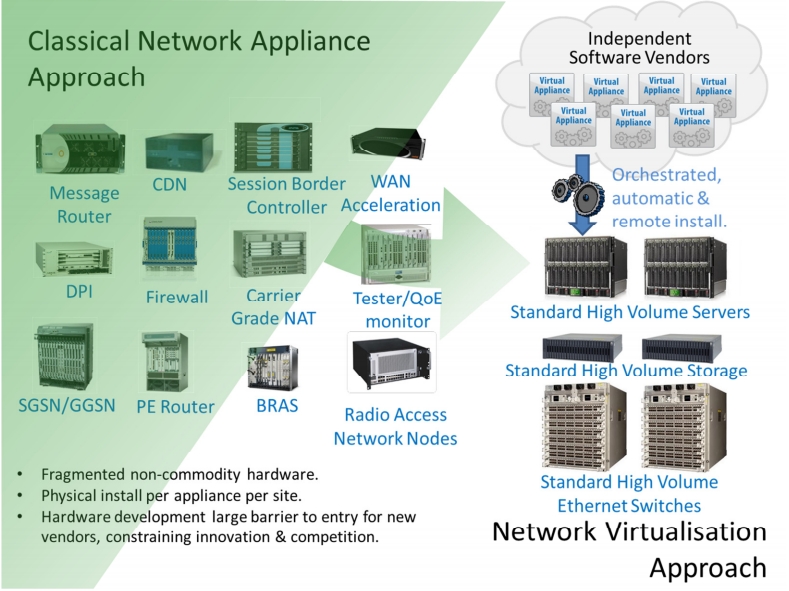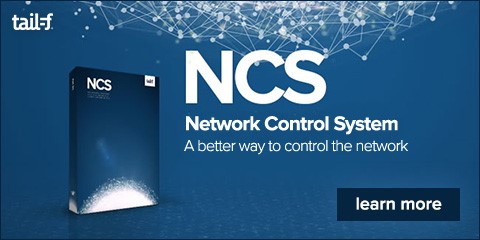NFV Evolution: Defining the Missing Link
By: Jesse Cryderman

Virtualization—replacing single instance, purpose-built hardware systems with distributed software solutions that can run on commercial off-the-shelf (COTS) servers—has impacted nearly every element of the IT landscape. It began with basic storage and backup services, then moved to software, then computing power, and then complete platforms and infrastructure. In telecom, even operational support systems (OSS) and business support systems (BSS) can be deployed in the cloud, offering unprecedented scalability and agility.
At the dawn of telecommunications, an operator seated at a switchboard was responsible for manually connecting signals from one circuit to another. These physical operations were replaced by mechanical switches and routers that evolved over time to handle thousands of very high bandwidth signals simultaneously, at extremely high speeds. This is the state of the network today, and it’s about to change.
With the advent of software defined networking (SDN) and its sibling, network functions virtualization (NFV), the fabric of the network itself is being virtualized. This development represents a monumental change for communications service providers (CSPs). To date, they have invested heavily in the network equipment, human resources, and support contracts that keep their networks ticking; now the limitations of the status quo are hindering their evolution.
Driven by a desire for accelerated service velocity and reduced network operational expense (OPEX), global CSPs are actively pursuing NFV and SDN strategies. Virtualizing network functions with NFV represents a paradigm shift; like any paradigm shift, it offers immense advantages over legacy networking, but not without challenges.

Figure 1 - Network Virtualization Approach
Source: ETSI, 2012
Network functions go virtual
The European Telecommunications Standards Institute (ETSI) created the NFV industry specification workgroup and has taken the helm in defining a framework for NFV. By virtualizing functions that once required physical hardware and manual programming configuration, extreme efficiency increases and cost reductions can be realized. Using commoditized computer hardware, not specialized, vendor-controlled equipment, network functions such as firewalls, DPI appliances, tunneling gateways, and more can be programmed automatically and instantiated in numerous locations. A telecom server could host a router one day and a session border controller the next, depending on demand, latency, and other network conditions. This would require new equipment, a truck roll, and a network engineer in the past. Figure 1 above illustrates the NFV network architecture compared to legacy architecture.




















